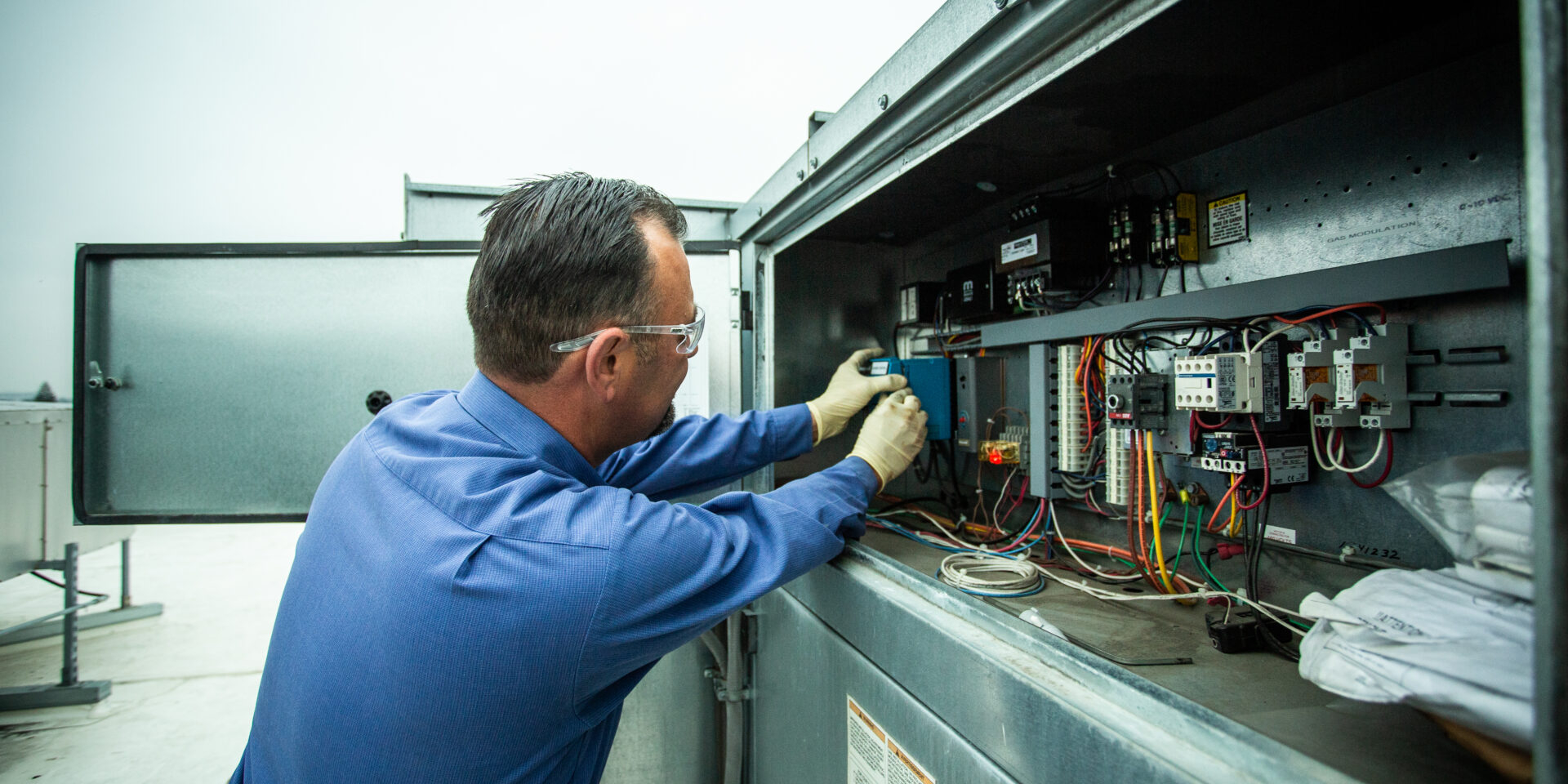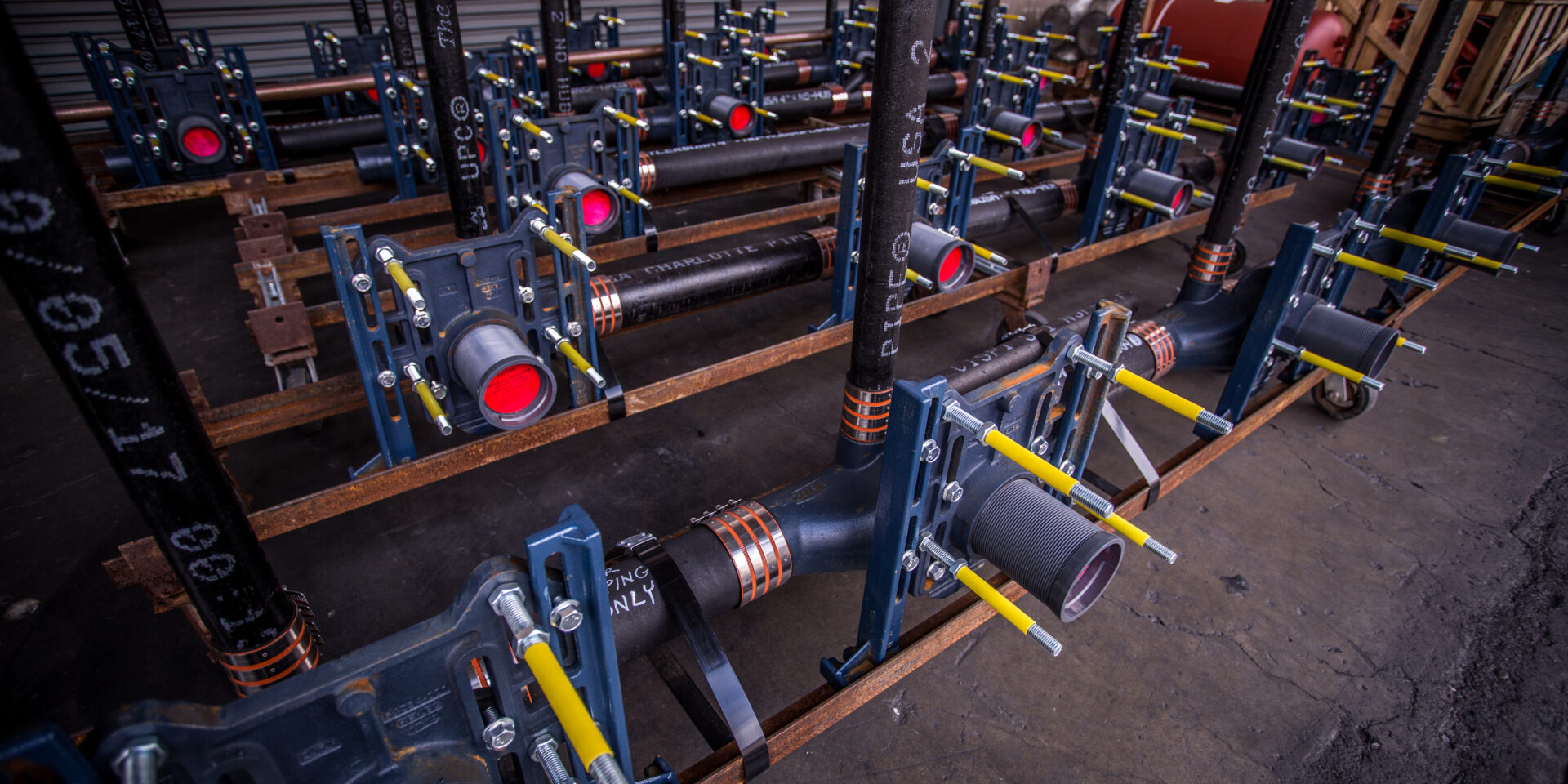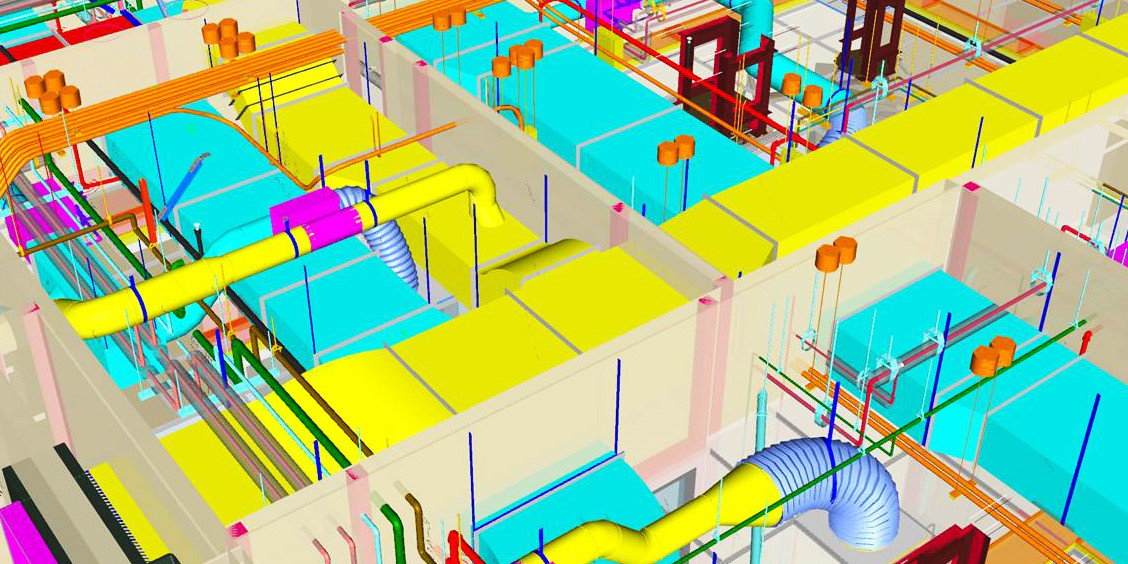Building developers, architects and mechanical engineers are always looking for ways to improve efficiency in HVAC equipment and system design. Geothermal technology continues to gain attention as a cost-effective alternative to conventional heating and cooling systems. Recent enhancements make geothermal a more affordable option for a wide variety of commercial applications.
What Makes Geothermal Technology so Efficient?
Conventional air-source heat pumps are subject to a rapid loss of efficiency during extreme outdoor temperatures as demonstrated by Coefficient of Performance (COP) equations. [1] Seasonal ambient air temperatures can vary by as much as 60 degrees Fahrenheit in most parts of the country. By contrast, a geothermal system uses the earth itself as the heat transfer mechanism. Since the temperature of the ground below the frost line is stable throughout the year, the energy exchange process is optimized.
Published EER and HSPF efficiency ratings are calculated by using measurements taken over a range of different temperatures, but the actual performance the of unit could be much worse when operating in typical seasonal weather extremes. To understand the negative impact of temperature fluctuations on air source heat pumps, ask your contractor to provide the unit’s extended efficiency ratings.
In contrast, the performance of a geothermal cooling and heating system remains consistent in all weather conditions since the ambient temperature surrounding the heat exchanger loop remains effectively unchanged. The extended ratings for a geothermal heat pump are superior in virtually all weather conditions.
Geothermal Technology Benefits for Green Building
Owners, administrators and facilities managers often struggle to balance the demands of tight budgets and escalating HVAC costs. Geothermal technology offers a variety of benefits for those interested in maximizing operational efficiency without compromising comfort or process efficacy.
- Exceptional Efficiency: Due to the stability of the earth’s temperature, geothermal systems maximize the transfer of thermal energy. Depending on the application, system configuration and geographic location, the EPA has determined that a geothermal heat pump can reduce heating and cooling energy consumption by up to 50 percent. [2]
- Lower Carbon Footprint: Geothermal technology reduces greenhouse gas emissions by up to 40 percent according to the EPA. [2] In addition to the reduction in power, replacing cooling towers with geothermal can save significant water resources. This includes water normally wasted through evaporation or cleanup. Since the earth’s core generates unlimited heat, geothermal is eligible for renewable energy certificates.
- Eliminates Costly HVAC Components: Removing heat rejector and boiler installation, maintenance and operation costs can reduce overall HVAC budget expenses. Geothermal also eliminates the need for water-loop temperature controls and the associated accessories, including control valves, sensors, switches and panels.
- Motor and Compressor Enhancements: Despite the inherent efficiency of geothermal technology, manufacturers continue to improve their products, especially in the areas of compressors and high-end motors. Programmable motors employed in variable-speed applications give the unit the ability to increase the output of the blower to match prevailing climate and occupancy conditions. Inverter compressor technology offers extremely high part-load efficiency by tailoring the output of the compressor to meet the varying building load requirements.
- Scaling Capabilities: Ground source heat pump systems can be scaled from a single zone to multiple zone applications to accommodate current operations and future growth.
- Smart Controls: Advancements in smart controls provide facilities managers with the ability to analyze data remotely and diagnose equipment issues. This is particularly beneficial for older buildings with substandard wiring configurations. Building managers have the flexibility to place controls where they’re needed, and they can easily expand the control framework as demand increases. Most new control systems include Bluetooth and Ethernet, an SD card and a USB port for up-to-the-minute real-time monitoring.
- LEEDS certification: Geothermal heat pumps provide a substantial boost to a building’s LEED scorecard. HVAC systems are heavily scrutinized in the LEED grading process.
Geothermal Technology is Green Building Friendly
Geothermal Systems continue to improve the cost/value equation in the commercial HVAC space. They’re an excellent choice for cost-conscious administrators managing the heating and cooling needs of schools, offices and other commercial buildings. Geothermal is particularly suited for traditionally difficult retrofit applications, which makes them ideal for older buildings.
By William Busse
William Busse has more than 30 years experience in the construction industry in sales, contracting, distribution and manufacturing. He has an extensive background in the mechanical contracting industry, largely from the distribution and manufacturing sides of the business. He has had deep involvement with a variety of large-scale commercial/industrial mechanical contractors, particularly related to value engineering. This includes process piping, high-pressure steam, cryogenics, thermal insulation and commercial/industrial HVAC.
Sources:
- https://www.engineeringtoolbox.com/heat-pump-efficiency-ratings-d_1117.html
- https://www.energy.gov/energysaver/choosing-and-installing-geothermal-heat-pumps
- https://www.achrnews.com/articles/133259-geothermal-advancements-just-breaking-the-surface
- https://www.achrnews.com/articles/133259-geothermal-advancements-just-breaking-the-surface
- http://www.duanesworld.net/duanesworld.net.sensors.htm
Related Posts
July 29, 2024










